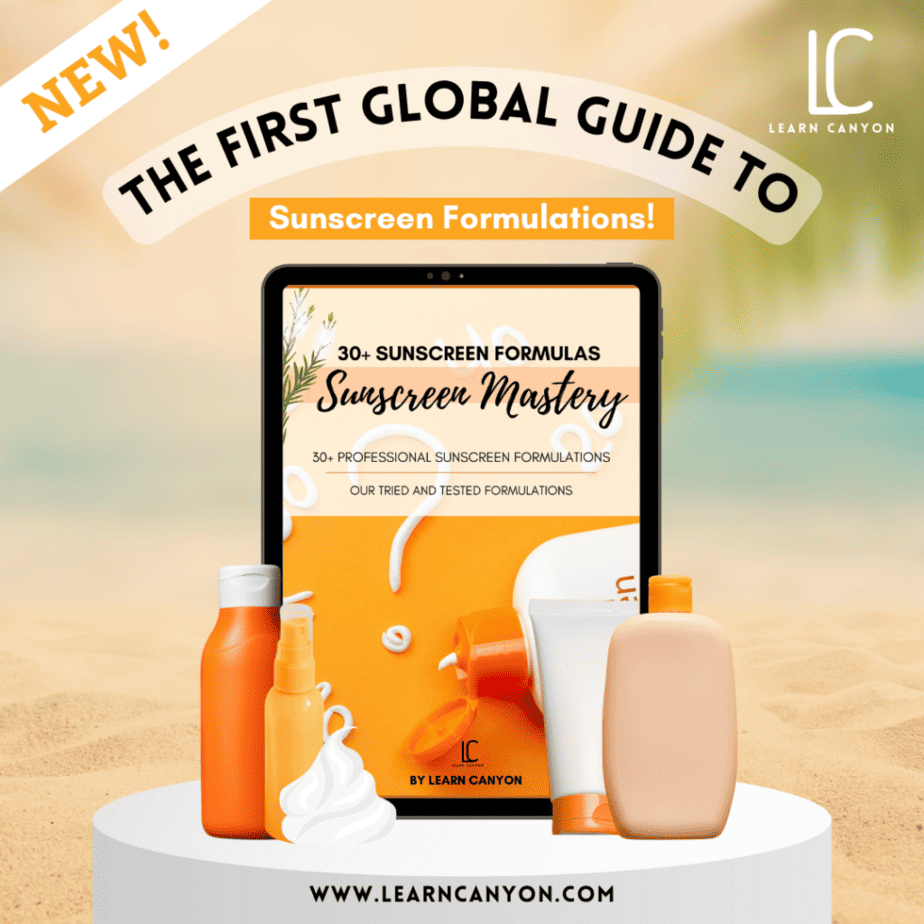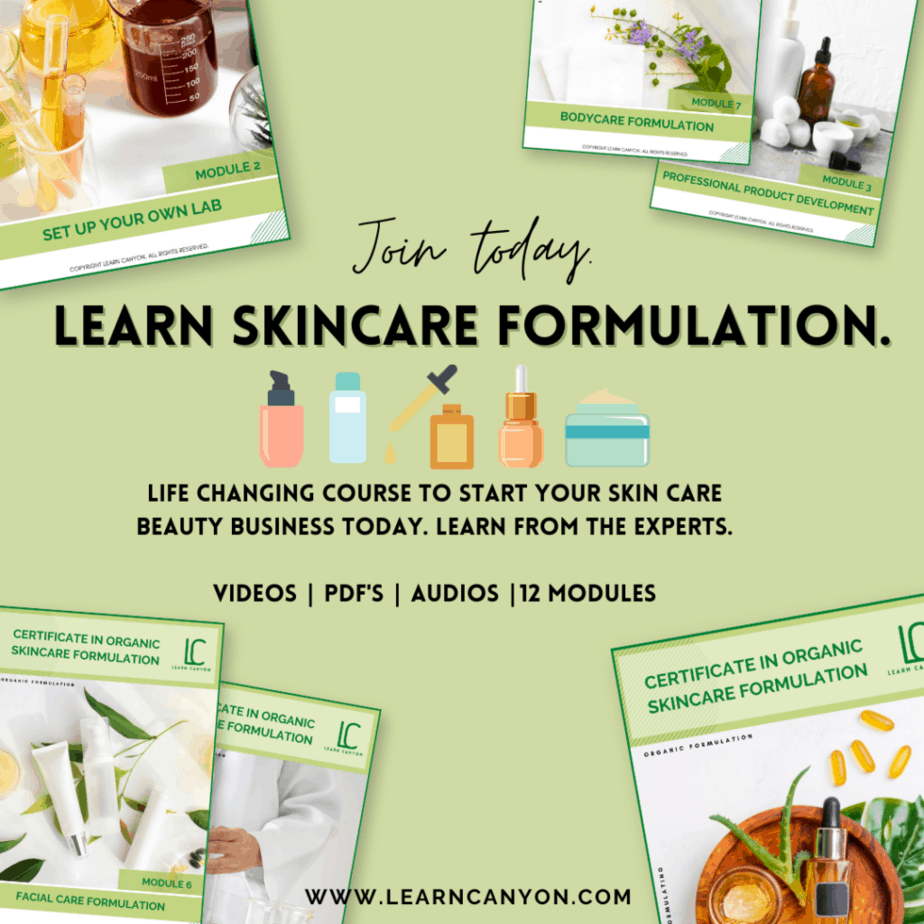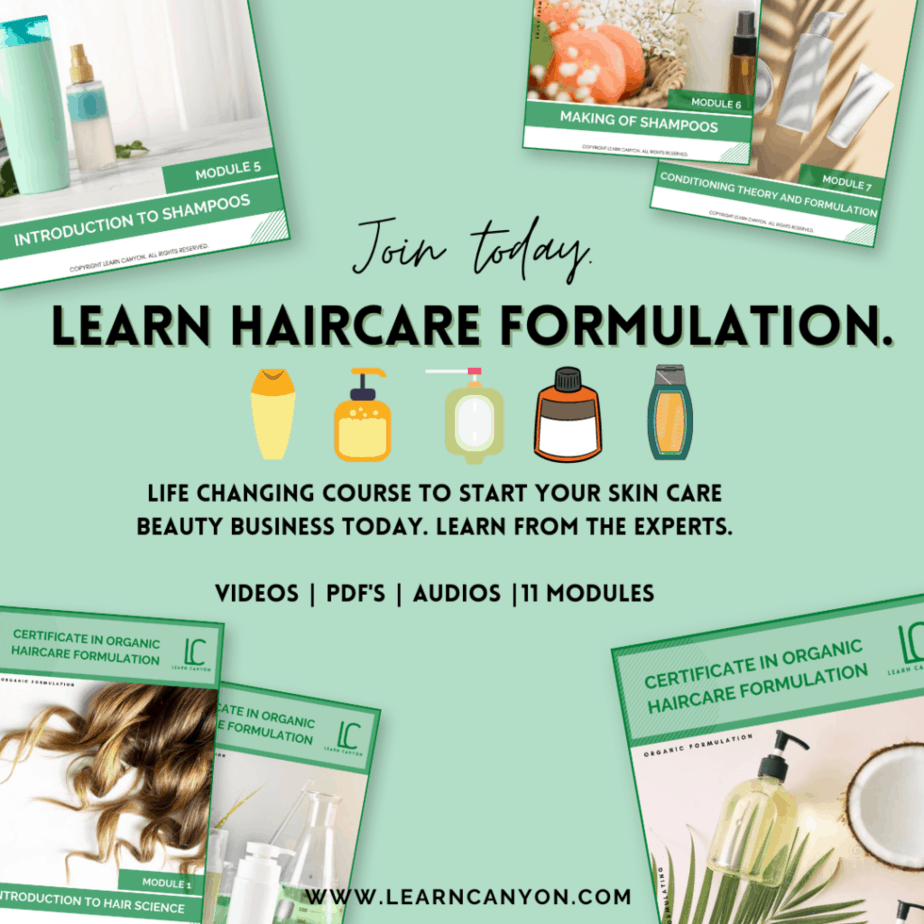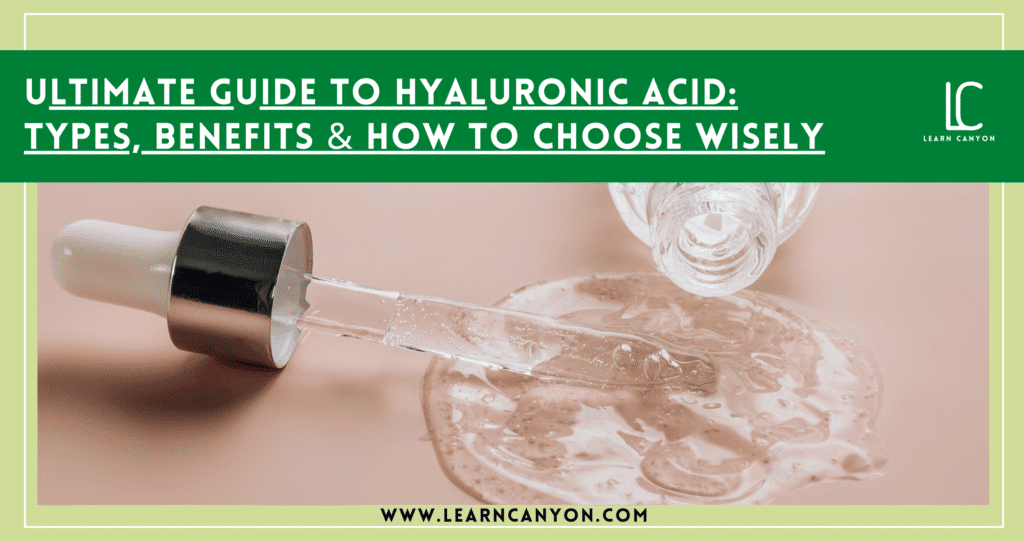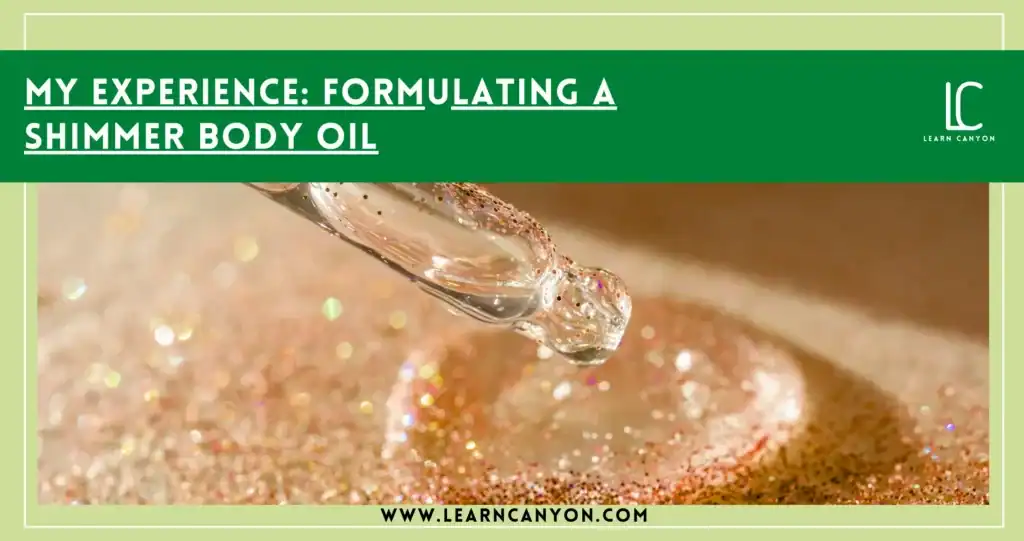Let’s be honest, Hyaluronic Acid is everywhere. It’s splashed across product labels, hyped up in skincare ads, and tossed around in beauty blogs like it’s the holy grail of hydration. And while it is incredibly effective, as formulators, we know it’s not just a trendy ingredient. It’s a molecule with depth, literally and scientifically.
In fact, if you’re serious about formulation, understanding the type of Hyaluronic Acid you’re using is just as important as including it in the first place. Because here’s the thing: not all hyaluronic acids are created equal. There are different molecular weights, varying levels of skin penetration, and even different sources of origin, and each one can drastically change the way your final product performs.
So in this blog, we’re not just going to celebrate HA, we’re going to understand it. I’ll walk you through its types, benefits, how to choose the right one for your formulation goals, and share some real formulator tips from my lab bench.
Ready to dive in?
Let’s hydrate your knowledge (pun fully intended!).
What Is Hyaluronic Acid?
Let’s take a quick trip back to the basics, because before you choose the right hyaluronic acid for your formula, it’s important to understand what it actually is at its core.
Hyaluronic Acid (HA) is a naturally occurring glycosaminoglycan, a fancy term for a type of sugar molecule that your body (and especially your skin) already knows and loves. It’s found in the extracellular matrix of your skin, eyes, joints, basically, all the places where hydration, cushioning, and structure matter. And what makes it such a formulator’s favorite? Its water-binding ability. One single gram of HA can hold up to 1,000 times its weight in water, yes, really!
But here’s where it gets interesting:
What most consumers don’t realize is that HA comes in different molecular weights, and that changes everything, from how it behaves on the skin to how deep it penetrates and how it feels in a formula.
In its raw form, HA is usually a high molecular weight polymer that sits on top of the skin and forms a moisturizing film. But break that molecule down into smaller fragments, and now you’re getting deeper hydration, more plumping action, and sometimes even enhanced delivery of actives.
You’ll also often see Sodium Hyaluronate on ingredient lists, this is the salt form of hyaluronic acid. It’s more stable, more water-soluble, and commonly used in formulations because it penetrates the skin a bit more effectively than its original acid form.
So, in a nutshell?
Hyaluronic Acid isn’t just a hydration booster, it’s a versatile active with layers (literally!). And as a formulator, once you understand those layers, you unlock a whole new level of performance in your products.

Why Molecular Weight Matters
Now let’s get to the juicy part, the molecular weight. Because if there’s one thing that truly changes how Hyaluronic Acid performs in your formulation, it’s this.
You see, most people think of HA as a one-size-fits-all humectant. But in the lab, we know better. The molecular weight of HA determines how it behaves on the skin, how deep it goes, and how long-lasting its effects are. It’s like working with different “versions” of the same ingredient, each one with its own superpower.
Here’s the breakdown:
High Molecular Weight HA (1,000–1,800 kDa)
This is your surface-level hydrator. It forms a light, breathable film on the skin, locking in moisture and giving that instantly plump, dewy finish. Think: protective, soothing, and great for sensitive or reactive skin types.
Medium Molecular Weight HA (250–750 kDa)
A great middle ground, it doesn’t sit just on the surface, nor does it go too deep. It hydrates both the upper and lower layers of the stratum corneum and adds bounce without feeling too sticky.
Low Molecular Weight HA (50–250 kDa)
This one penetrates deeper into the epidermis and helps improve skin elasticity and firmness over time. It’s great for anti-aging formulations, but be mindful, it may cause slight irritation for super sensitive skin if used at high levels.
Ultra Low / Oligo HA (<50 kDa)
This is your advanced-performance HA, small enough to reach the deeper layers and stimulate collagen production and skin repair. It’s often used in luxury serums or post-procedure skincare, but again, sensitivity is something to watch for.
So, why does this matter to us as formulators?
Because choosing the right molecular weight can either elevate your formula, or totally misalign it with your goals. Want instant hydration and barrier support? High MW is your friend. Looking to target fine lines and skin firmness? You’ll want to dip into low or ultra-low territory.
In fact, some of the most effective products combine multiple weights to create a layered hydration effect, immediate plump on the outside, deeper hydration and repair beneath.
Think of it like building a hydration strategy, not just adding a popular ingredient. When we formulate with intention, that’s when the real magic happens.
Benefits of Each Type of HA in Formulations
Now that we’ve broken down the different molecular weights of Hyaluronic Acid, let’s talk about what each one actually does in a formulation, and more importantly, when to use which type.
Because here’s the truth: the benefits of HA aren’t just about how much you use, it’s about which version you choose. Think of each molecular weight like a specialist with a specific role to play. When used strategically, they can take your product from average to absolutely transformational.
High Molecular Weight HA – The Surface Protector
This one is your go-to for instant results. It forms a breathable film on the skin’s surface, reduces transepidermal water loss (TEWL), and gives that smooth, hydrated, glass-skin effect. It’s also incredibly gentle, making it ideal for soothing sensitive skin or for use in cooling gels, hydrating mists, and eye creams.
Best For: Barrier support, soothing, surface hydration, calming formulas.
Medium Molecular Weight HA – The Balanced Hydrator
This version offers a beautiful balance of surface and sub-surface hydration. It gives a plush skin feel, longer-lasting moisture, and a soft, silky texture without being sticky or heavy. It’s fantastic in daily moisturizers, facial serums, and emulsions that need that cushiony, skin-loving finish.
Best For: Versatile hydration, layering effects, long-wear moisturizers.
Low Molecular Weight HA – The Deep Diver
Now we’re getting serious. LMW HA is small enough to reach deeper into the epidermis, where it helps with elasticity, plumpness, and anti-aging support. It stimulates skin regeneration and improves texture over time. Use this in your targeted serums, repair treatments, or night-time rituals.
Best For: Mature skin, fine lines, long-term hydration, rejuvenating blends.
Ultra Low / Oligo HA – The Cell Communicator
This one’s a powerhouse. Due to its ultra-small size, it can potentially stimulate collagen synthesis, assist in wound healing, and boost skin renewal. It’s used in advanced skincare formulations, often alongside peptides, growth factors, or encapsulated actives. But use it mindfully, this is not the type to throw in without considering skin type and concentration.
Best For: Luxe, high-performance skincare, post-procedure care, high-impact anti-aging.
What’s the Formulator Sweet Spot?
Honestly? Layering different molecular weights gives you the best of all worlds, immediate hydration, a soft finish, and long-term skin benefits. It’s like giving the skin hydration at every level, from the outermost barrier to the deeper epidermis.
If you’re crafting a product where the experience is just as important as the effect, think spa-inspired serums or professional-grade moisturizers, dual or triple-weight HA combinations are your best friend.And when you choose your HA wisely, it’s not just an ingredient, it’s a story your formula tells, layer by layer.
How to Choose the Right Hyaluronic Acid for Your Formula
Alright, so now that we understand the types and benefits of Hyaluronic Acid, let’s get practical. Because as a formulator, you’re not just picking ingredients for the sake of it… you’re solving a problem, meeting a skin need, and creating a sensory experience all at once.
So how do you decide which HA to use?
Let’s break it down by what actually matters when you’re developing a formula:
1. What’s the Product Type?
Start here. Are you creating a lightweight toner, a hydrating mist, a rich night cream, or a high-performance serum?
- Toners, mists, gels: High molecular weight HA works beautifully, gives instant hydration without heaviness.
- Serums and emulsions: Go for a blend, low molecular weight for deeper hydration, medium for that soft slip.
- Luxury creams or repair treatments: This is where you can bring in ultra-low HA, especially if you’re targeting signs of aging or skin barrier repair.
2. What’s the Skin Type You’re Targeting?
- Sensitive or compromised skin? Stick to high or medium molecular weight HA, gentle and soothing.
- Dry or mature skin? Add low or ultra-low HA for deeper hydration and a long-term plumping effect.
- Oily or acne-prone skin? Keep the HA lightweight, avoid overly rich textures by using sodium hyaluronate in a low viscosity gel base.
3. What’s the Overall Skin Goal?
This is your formula’s “why.” Is it about:
- Soothing and calming (go high MW),
- Deep hydration and skin resilience (go low or ultra-low),
- Daily moisture maintenance (medium weight is your best friend),
- Or maybe a multi-layered effect that does it all? In that case, you’re looking at a synergistic blend of two or more molecular weights.
4. What’s Your Texture Vision?
Remember, HA can also impact viscosity and feel:
- High MW can thicken a watery base slightly and give that cushiony “grip.”
- Low MW won’t add much to texture but will enhance hydration and penetration.
- Sodium hyaluronate (especially in powdered form) is perfect when you need clear solubility and minimal interference in texture.
5. What’s Your Budget?
Let’s be real, cost plays a role, especially if you’re formulating for a brand or client. Ultra-low molecular weight HA is more expensive, while standard sodium hyaluronate (medium to high MW) is much more cost-effective and still gives excellent results when paired well.
Pro tip? Don’t underestimate the power of blending a small amount of low MW with a higher MW base. You can get the best of both performance and price.

Final Word?
Choosing the right Hyaluronic Acid is about intentionality. It’s not about using the fanciest version, it’s about understanding what your formula needs to do and selecting the form that supports that mission.
Remember: When you formulate with clarity and confidence, your ingredients don’t just function, they shine.
Natural-Origin, Fermented & Sodium Hyaluronate: What’s the Difference?
Okay, so by now we know that molecular weight is a game-changer, but what about the form of Hyaluronic Acid you’re actually working with?
If you’ve ever scanned a supplier’s catalog and seen terms like “Sodium Hyaluronate,” “Fermented HA,” “Vegan HA,” or “Plant-derived HA”, you’re not alone in wondering what sets them apart.
Let’s unpack these, shall we?
Natural-Origin Hyaluronic Acid
This sounds appealing, who doesn’t love the word “natural,” right? But here’s the truth: naturally occurring HA was historically sourced from animal tissue, especially rooster combs (yes, really!). Thankfully, the industry has shifted toward more ethical and sustainable sources, especially in the clean beauty space.
These days, when suppliers say “natural-origin,” they usually mean HA produced through fermentation using plant-based substrates, but it’s always worth double-checking the sourcing method in their documentation.
Fermented Hyaluronic Acid (Biotech HA)
Now this is the gold standard for modern, clean formulations. Fermented HA is produced by bio-fermentation, typically using non-GMO strains of Streptococcus zooepidemicus or similar bacteria. It’s grown in a lab, purified, and dried into a fine powder. It’s:
- Vegan-friendly
- Highly stable
- Safe, consistent, and reproducible
- And compatible with natural or organic formulations
Fermented HA is what I personally reach for when formulating high-performance, professional skincare, especially if the brand values sustainability, transparency, and clean-label claims.
Sodium Hyaluronate: The Salt Form
Let’s get clear here, Sodium Hyaluronate is still Hyaluronic Acid. It’s just the sodium salt version, which makes it:
- More water-soluble
- More stable
- And generally easier to work with in formulations
Most of the time when formulators say they’re using HA, they’re technically using Sodium Hyaluronate, and that’s totally fine. It comes in multiple molecular weights, just like HA, and gives you the same incredible hydration benefits, often at a lower cost.
Pro tip? If your goal is to use “Hyaluronic Acid” for marketing purposes but you’re using Sodium Hyaluronate, you can still highlight the benefit on the label, just make sure your INCI and technical documentation are spot-on.
So, Which One Should You Choose?
- Want a clean, vegan, and sustainable option? → Go for fermented hyaluronic acid
- Need a cost-effective, stable performer that plays well in almost any formula? → Use Sodium Hyaluronate
- Formulating for a natural brand with strict sourcing policies? → Always check if your supplier’s HA is plant-derived and fermentation-based, and ask for proof!
At the end of the day, it’s not about which version is “better”, it’s about what aligns with your formulation goals, performance needs, and brand philosophy.
And as always, when in doubt, ask your supplier detailed questions. The more you understand the origin and form of your ingredients, the more confidently you can stand behind your final product.
Formulation Tips & Usage Rates
So you’ve chosen your Hyaluronic Acid, perfect! But before you go tossing it into your water phase and calling it a day, let’s talk about how to use it effectively. Because yes, HA is powerful, but it’s also a bit… particular.
Whether you’re working with high molecular weight, low, or a blend, how you incorporate it matters. A lot.
Let’s walk through the formulation essentials:
1. Water Soluble Only – Always in the Aqueous Phase
First things first, HA is water-soluble. This means it needs to be fully hydrated in water (or hydrosols) before it can deliver its magic. Never try to mix it into oil phases or emulsions without dispersing it in water first, you’ll end up with clumps and a very unhappy formula.
Tip: Slowly sprinkle HA into your water phase while stirring continuously. Don’t dump it in all at once, it can clump like crazy.
2. Add at the Right Time in the Process
For powdered HA or sodium hyaluronate, you’ll need to let it bloom in the water phase. This can take anywhere from 30 minutes to a few hours, depending on the molecular weight and particle size.
Some versions are pre-dissolved liquids, these can be added during the cool-down phase (below 40°C) to preserve activity.
Cool-down Reminder: Heat-sensitive forms (especially low or ultra-low molecular weights) should never be heated above 40°C. Always check the supplier’s guidelines.
3. Usage Rates by Molecular Weight
Here’s a cheat sheet you’ll love:
| Type of HA | Recommended Usage Rate |
| High Molecular Weight | 0.1% – 0.5% |
| Medium Molecular Weight | 0.05% – 0.3% |
| Low Molecular Weight | 0.01% – 0.1% |
| Ultra Low / Oligo Hyaluronic Acid | 0.01% – 0.05% |
| Sodium Hyaluronate (standard) | 0.1% – 1.0% |
Remember: A little goes a long way. Don’t be tempted to overload your formula, it won’t necessarily increase hydration, but it can cause pilling or tackiness.
4. Synergize with Other Humectants
Hyaluronic Acid works best when it’s not working alone. Pair it with other humectants like:
- Glycerin
- Panthenol (Vitamin B5)
- Sodium PCA
- Betaine
- Aloe vera juice
This helps balance water retention across different layers of the skin and keeps the formula feeling comfortable, not tight or sticky.
5. Adjust Your Preservative System
HA is water-soluble and part of your aqueous phase, so it increases water activity in your formula. Make sure your preservation system is robust enough to protect your product from microbial growth, especially if you’re formulating with botanicals or plant-based waters alongside HA.
Bonus Lab Tip from Me to You:
If you’re ever struggling with a gel or serum that’s too thin, try combining High MW HA with xanthan gum or sclerotium gum to create a beautiful slip and more structured gel feel. It’s a lovely combo for facial hydrators!In short, formulating with HA is about being precise and patient. But once you understand how it behaves, you can create deeply hydrating, luxurious products that feel like magic on the skin.

Priya’s Pick: Sample Serum Formula Featuring Dual Molecular HA
Alright, let’s put all this HA knowledge into action with a simple yet powerful hydrating serum. This formula is one of my absolute favorites, it combines both high and low molecular weight hyaluronic acid to deliver instant surface hydration and deeper moisture replenishment. It’s light, effective, and elegant… just how I like my formulations!
Perfect for:
Daily hydration
All skin types (yes, even sensitive!)
Layering under moisturizers or SPF
Hydra-Lift Serum – 100g (Cold Process)
Phase A – Water Phase
- Distilled Water – Qs
- Glycerin – 4%
- Sodium Hyaluronate (High MW) – 0.3%
- Sodium Hyaluronate (Low MW) – 0.05%
- Panthenol (Vitamin B5) – 2%
- Propanediol (or another natural humectant) – 3%
Phase B – Actives & Extracts
- Cucumber Extract – 3% (calming and cooling)
- Sodium PCA – 2% (hydration booster)
- Licorice Root Extract – 2% (brightening & soothing)
Phase C – Preservative & Final Adjustments
- Preservative (e.g., Geogard Ultra or Eco E – as per supplier) – 1%
- pH Adjuster (e.g., Lactic Acid or Sodium Hydroxide) – q.s. to pH 5.0–5.5
Formulation Notes:
- Dissolve both HA types separately in glycerin-water blend. Let them hydrate fully, don’t rush this step!
- Add botanical extracts and actives once the base is smooth and lump-free.
- Always check pH at the end, HA is most stable between 4.5 and 6.
- Store in a pump or dropper bottle, preferably airless for extra protection.
Tips:
To upgrade this for a more luxe version, you can add:
- 0.2% Silk Peptides or Hydrolyzed Rice Protein
- A few drops of natural polysaccharides (like tremella or aloe ferment) for that jelly-soft glide
- And a dash of essential oils or hydrosol for a sensory twist, just make sure your preservative system is adjusted accordingly!
This serum is a total crowd-pleaser, lightweight, non-sticky, and leaves the skin feeling quenched and plump. It’s also a wonderful base to build more targeted treatments around. Once you master this, the HA world is truly your playground!
Conclusion
So, here’s the takeaway: Hyaluronic Acid isn’t just a trend, it’s a tool. And like any tool in a skilled formulator’s hands, it only becomes powerful when used with precision and purpose.
We’ve explored the science behind molecular weights, the differences in sourcing and form, and the art of balancing hydration throughout different skin layers. But here’s the real secret, not every formula needs every type of HA. It’s not about using all the options. It’s about knowing why you’re using a specific one, and how it serves your skin goals.
Because at the end of the day, effective formulation isn’t about chasing hero ingredients, it’s about understanding your ingredients so well, they become heroes in your hands.
So whether you’re designing a simple hydrating serum or an advanced anti-aging elixir, let your formulation choices be intentional, thoughtful, and rooted in real skin science. That’s how you stand out, not just as a formulator, but as a creator of experiences.
And if you ever need a reminder, just come back to this blog. Because you’re not just adding Hyaluronic Acid into a bottle… you’re crafting hydration, drop by drop, with clarity and confidence.
